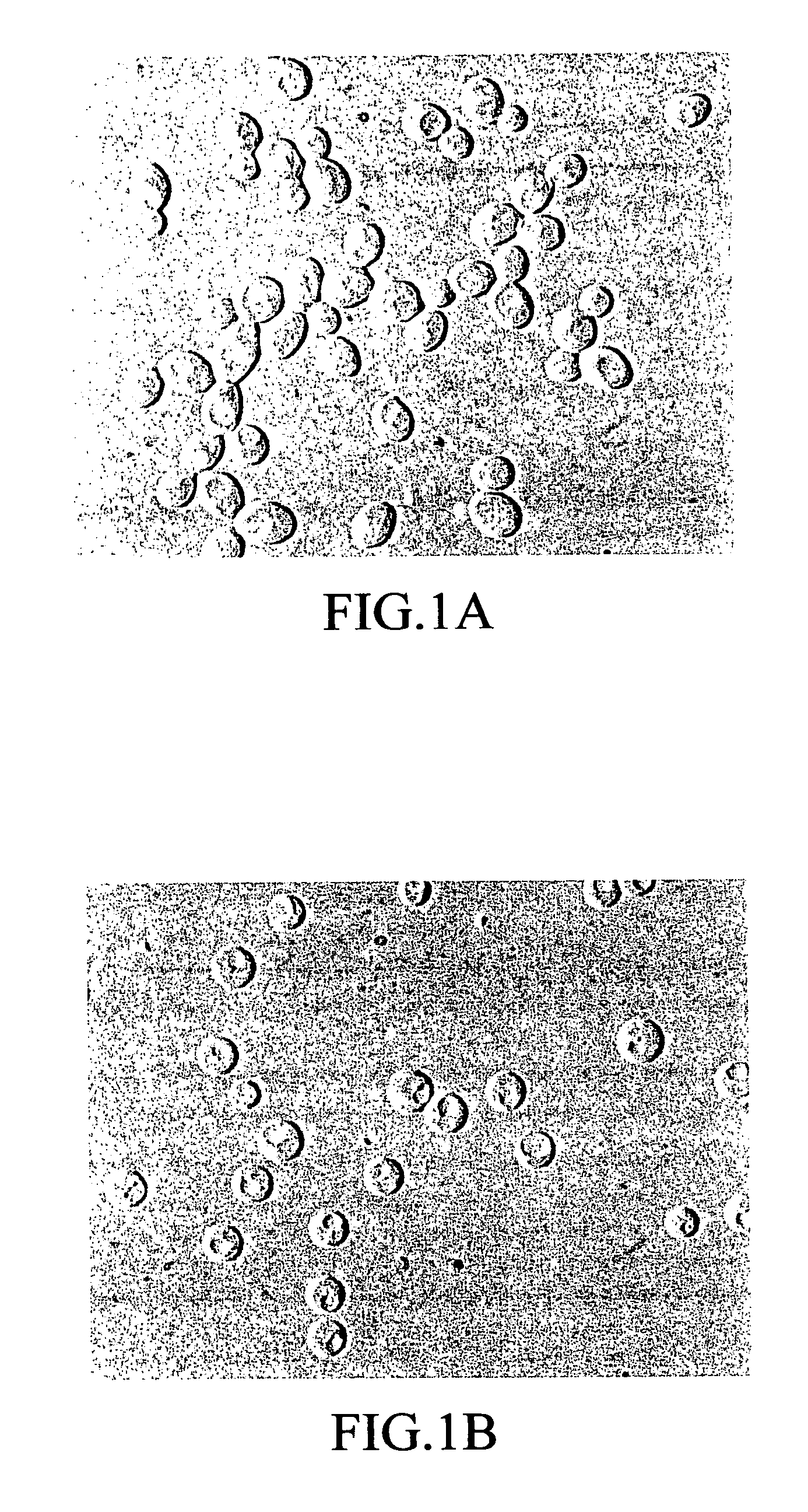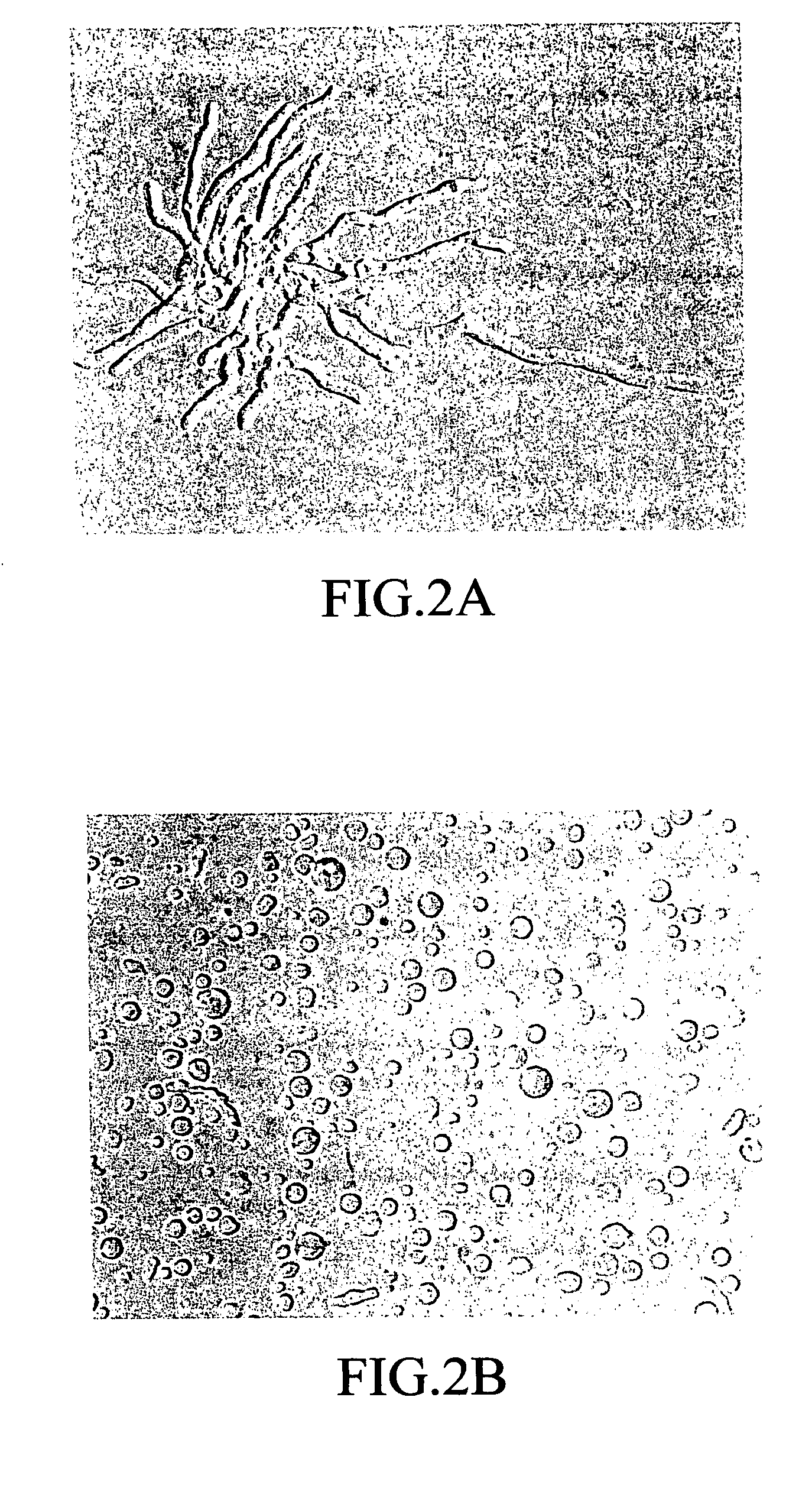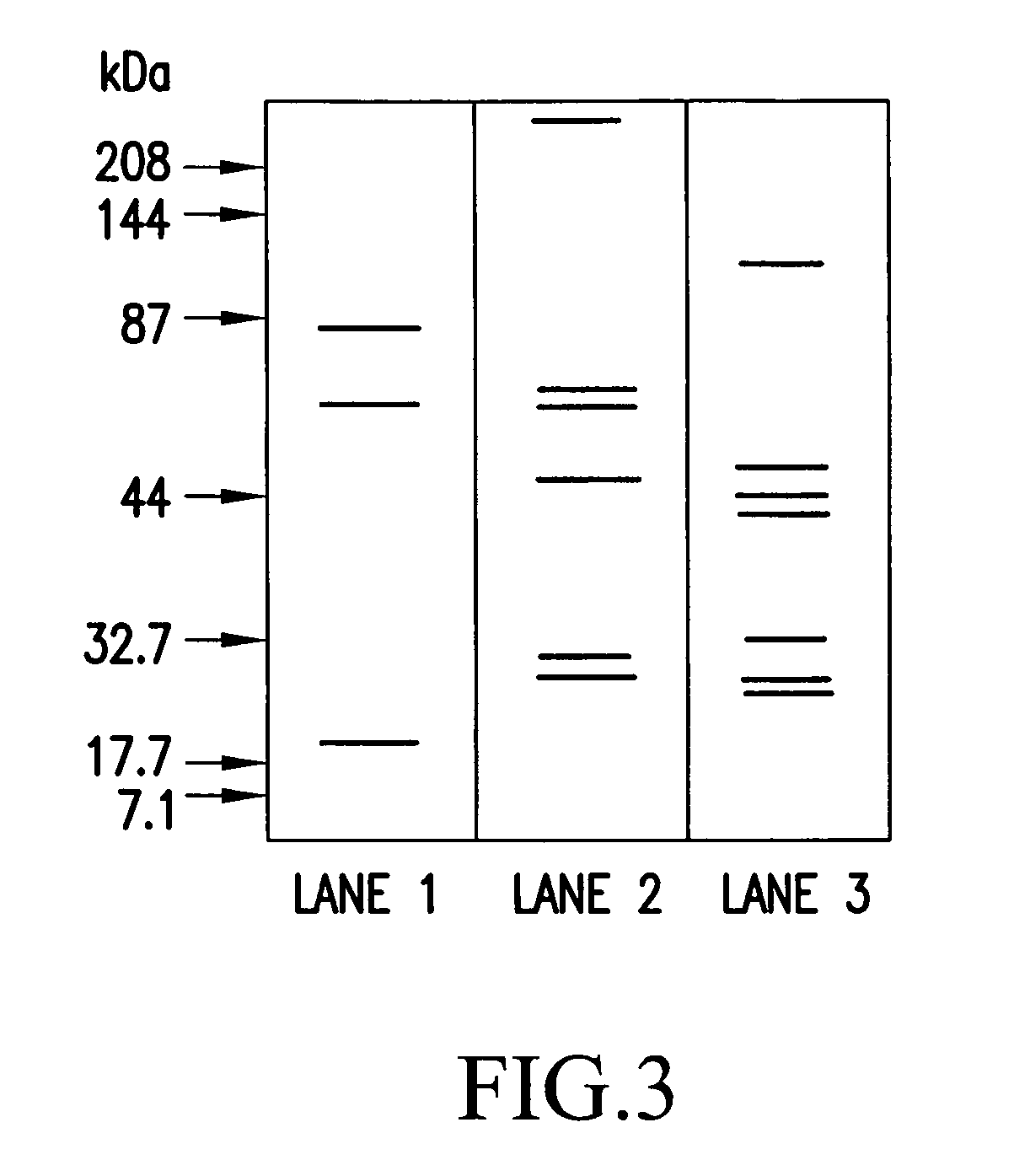Fungal antigens and process for producing the same
a technology of antigens and fungi, applied in the field of fungal antigens, can solve the problems of frequent onset of thrush in patients with aids, unsatisfactory effects, and vomiting, and achieve the effects of potent activity, potent antigenicity, and potent antigenicity
- Summary
- Abstract
- Description
- Claims
- Application Information
AI Technical Summary
Benefits of technology
Problems solved by technology
Method used
Image
Examples
example 1
Preparation of Cell Fraction and Insoluble Fraction of Candida albicans Cells
[0155]1) Preparation of protoplast cells: A platinum loopful of Candida albicans TIMM 1768 in Sabouraud agar slant culture was inoculated to an YPD medium (1% by weight yeast extract, 2% by weight polypeptone, 2% by weight glucose) in a test tube. After shaking culture at 30° C. for 24 hours, a portion of the culture was transferred to the YPD medium in an Erlenmeyer flask and subjected to shaking culture overnight at 35° C. The culture obtained was centrifuged at 2,000×g for 10 minutes to harvest the cells. The cells obtained were of an yeast phase. The cells were washed once with sterile water, and then washed once with an SSB solution (50 mM phosphate buffer, pH 7.5, containing 0.8 M sorbitol). After the cells were again suspended in an appropriate volume of the SSB solution, an SSB solution containing 100 mM EDTA in a volume of one-eighth that of the above SSB solution, and an appropriate volume of 2-me...
example 2
Preparation of Insoluble Fraction of Aspergillus fumigatus
[0161]1) Preparation of insoluble fraction of Aspergillus fumigatus (Af-LSP) (1): Physiological saline containing 0.1% by weight of Tween 80 was added to a Sabouraud dextrose agar slant culture of Aspergillus fumigatus TIMM 1776 to prepare a spore suspension. A portion of the suspension was transferred to a Potato-Dextrose medium (manufactured by Difco) in an Erlenmeyer flask and subjected to shaking culture overnight at 30° C. The obtained culture was filtered with a glass filter to harvest mycelium. The mycelium was suspended in 10 mM phosphate buffer, pH 6.0, containing 0.8 M NaCl, and Yatalase (manufactured by Takara Shuzo Co., Ltd.) was added thereto to make up a final concentration of 10 mg / ml, followed by gentle shaking at 30° C. for four hours. The suspension obtained was filtered with a glass filter to harvest the protoplast cells.
[0162]The cells were washed twice with 0.8 M NaCl. Thereafter, to the protoplast cells...
example 3
Preparation of Insoluble Fraction of Crytococcus neoformans (Crn-LSP)
[0164]A platinum loopful of Cryptococcus neoformans TIMM 0354 in Sabouraud dextrose agar slant culture was inoculated to the YPD medium in an Erlenmeyer flask, followed by shaking culture at 30° C. overnight. The culture obtained was centrifuged to harvest the cells. The cells were washed once with sterile water, and then suspended in 100 mM citrate buffer, pH 5.8, containing 1 M sorbitol and 100 mM EDTA. Trichoderma Lysing Enzyme was added thereto to make up a final concentration of 5 mg / ml, followed by gentle shaking at 37° C. for one hour. The suspension obtained was centrifuged at 2,000×g for 10 minutes to harvest the protoplast cells. After the cells were washed with the above hypertonic buffer, sterile physiological saline was added to suspend the protoplast cells to make up a concentration of 1×108 cell / ml to be burst. The suspension was centrifuged at 10,000×g for 30 minutes to harvest an insoluble fraction...
PUM
| Property | Measurement | Unit |
|---|---|---|
| temperature | aaaaa | aaaaa |
| temperature | aaaaa | aaaaa |
| pH | aaaaa | aaaaa |
Abstract
Description
Claims
Application Information
 Login to View More
Login to View More - R&D
- Intellectual Property
- Life Sciences
- Materials
- Tech Scout
- Unparalleled Data Quality
- Higher Quality Content
- 60% Fewer Hallucinations
Browse by: Latest US Patents, China's latest patents, Technical Efficacy Thesaurus, Application Domain, Technology Topic, Popular Technical Reports.
© 2025 PatSnap. All rights reserved.Legal|Privacy policy|Modern Slavery Act Transparency Statement|Sitemap|About US| Contact US: help@patsnap.com



